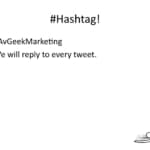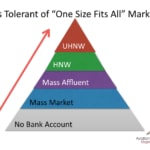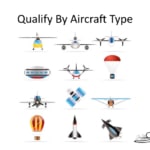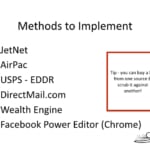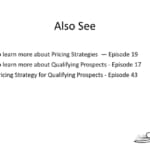How can narrowing your prospect list help you spend the time and money where it will do the most good?
You’ll find a ton of marketing advice out there about how to EXPAND your prospect lists, and a lot of it is great stuff. But there comes a point when you want to really decide – which of the people on this list are REALLY qualified prospects? Which of them are most likely to actually buy my product or service?
Transcript – Narrowing Your Prospect List
Paula Williams: Welcome to aviation marketing Hanger Flying, episode number 44. Today we’re talking about how narrowing your prospect list can help you spend the time and money where it will do the most good! I’m Paula Williams.
John Williams: And I’m John Williams.
Paula Williams: And we are ABCI, and ABCI’s mission is?
John Williams: To help all you folks out there sell more products and services in the aviation industry.
Paula Williams: Absolutely. So if you want to comment on this episode, or anything else for that matter, you can use the #AvGeekMarketing. You can comment on our blog, or on Facebook, Twitter, or Instagram, and we will reply to everything that we can find that has to do with this, for aviation marketing in general, right?
John Williams: Of course.
Paula Williams: Of course, all right. So most of the time, people talk about expanding their list. I want a bigger sales funnel, I want a bigger pipeline, I want more people. So why are we talking about narrowing your list?
John Williams: I don’t know why.
Paula Williams: [LAUGH] Let’s take a question.
Actually, it is important to, in general, to have more prospects for your product or service. But in aviation, in particular, and in high-end products in general, you do want to have a narrower list for a bunch of reasons that we’re going to talk about. So there’s the concept of a big pipeline, but you might have teeny tiny lists building up that big pipeline.
And the reason for that is because you want to treat people a little bit differently depending on their specific wants and needs. Because everybody is so flooded with advertising these days that if they get the postcard to dear customer, or the e-mail that is about aircraft donors in general or things like that, it’s just going to get deleted.
You really have to be very specific about the way that you talk to people in order to be effective. Does that make sense?
John Williams: So how do you delete a postcard?
Paula Williams: How do you delete a postcard? You throw it in the garbage. How do you delete postcards?

John Williams: I don’t know, it just sound like a funny thing to say.
Paula Williams: [LAUGH] I’ve seen you sort the mail over the garbage can, or over the shredder.
John Williams: But, that’s not deleting. That’s not the term I’d use for it.
Paula Williams: Okay, well, that’s cool. Anyway, the point being, people aren’t going to be paying attention to your advertising unless it is very focused and specific.
So narrowing your list can be a very good thing to do, and we’ll talk about why and how to do that. So a great campaign needs three things, right?
John Williams: Yep.
Paula Williams: A list, an offer, and a presentation. So let’s just imagine, in an example, that you have $1000 to spend on a marketing campaign for a particular something or other, just to make the numbers easy, right?
So the options that you have are to send 1,000 postcards, first class mail and plus printing and everything else that will probably end up costing you a little bit more than that, but just to keep the numbers round. Or you could send 500 postcards twice to that same list.
So you’re half the list but twice the impact. Or you could do 50 three-part campaigns where you send them the three-part series of postcards or whatever. Or you could do a list of ten if you did a direct mail campaign or maybe an in-person visit or something along those lines.
So the smaller your list, the more specific and high-impact your marketing can be. So that’s the trade-off really, right?
Paula Williams: If you have $1,000 to spend, and you have a list of 1,000 to cover, you really can’t do a whole heck of a lot. But you can be a whole lot more impactful with a smaller list, right?
John Williams: Sure.
Paula Williams: Exactly, because most people are not going to respond the first time they hear from you, especially if it’s the first time they’ve heard of your company, or your product, or your service. So you really need to think about, how can I make my marketing more likely to be responded to, rather than using the shotgun approach, which doesn’t really work very well in aviation, right?
John Williams: Nope, it does not.
Paula Williams: Right, so in most cases, if you’re coming from retail, or if you’re coming from some type of marketing where you’re using a mass approach and things like that, then the thing that we need to think about is making the list smaller so that we can afford to do more with those people.
And also, choosing very carefully who those people are so that our response rate goes way up even though the numbers are small. With me, so far?
John Williams: Yeah, of course.
Paula Williams: Okay, cool. All right, another thing that you need to know is that the higher up the economic ladder people go, the less tolerant they are of one size fits all marketing. So, narrowing your prospect list becomes more important.
So if you’re talking about people who have no bank account or people who are in the middle or bottom of the middle class, then they get a flyer in the newspaper or something like that, and they respond to that pretty well with that demographic. So, that kind of marketing works really well if that’s who you’re going after.
But as you get into mass market, mass affluent, high net worth and ultra high net worth individuals, the less effective that mass approach is going to be. So you need to be more personalized, more specific, and more attuned to what they want and need. So you get less of their time, so you need to make better use of it, right?
John Williams: Absolutely.
Paula Williams: Okay, so we talked about the ways to qualify prospects, money, authority, and need, right? So there are several ways to narrow that list, and we’re going to be talking about some of those ways in more specific.
John Williams: Actually, I thought it was money, authority, and need.
Paula Williams: Money, authority, and need. Yup, that is absolutely right.
John Williams: You said money, ability, and need.
Paula Williams: Did I?
John Williams: Yeah.
Paula Williams: Heaven forbid.
John Williams: [LAUGH]
Paula Williams: So it is ability but also authority, all right. So one thing we can qualify people by is aircraft type. And this is where we could use a service that takes advantage of the FAA records to tell us what type of aircraft a person has.
So you may sell a product or service that is particularly of service to people who have twin turbines. So then, you can look up the Cicadas, the Kodiaks, the King Airs, other kinds of things.
John Williams: I thought you said twin turbines.
Paula Williams: Okay
Paula Williams: We’ll cut that bit out.
So let’s say that you have a product or service that is particularly attuned to.
John Williams: Single turbines.
Paula Williams: Single turbines, such as Cicadas and-
John Williams: Kodiaks.
Paula Williams: Kodiaks and-
John Williams: Even the new Cessna.
Paula Williams: Yeah, the new one, the Denali.
John Williams: Yes.
Paula Williams: That’s pretty cool, right. So then, you can look at those specific aircraft types and reduce your list by that number, or say, these are the only people that I want to advertise to.
So you can do that with direct mail list using those types of services that access the FAA records. You can also do that using the Facebook ads manager where you look for specific aircraft types as a keyword or an interest in that category. So that’s one way to qualify your list or to make sub-lists of a list that you have.
Another thing you can do is to qualify by geography, and you can do this by zip code or sub zip code. So if you are offering, as an example, a charter service, and you specifically have a target city or a target area that you want to advertise to, you can use every door direct mail to target that area.
And you can specifically target people with a specifically high net worth, or specific job titles, or that work for a particular company, or whatever that then do sort that by zip code. So then, you’re getting all of the financial advisers in a particular sub zip code of the Hamptons, if that’s one of the areas that you charter to on a regular basis.
So that’s another way to narrow your list or another factor that you can narrow your list by that’s particularly effective. And the every door direct mail has an online tool that’s cool. If you’re familiar with that, it’s you go to usps.gov, and then it’s their every door direct mail EDDM.
And there’s a little application that you can use to target, and they will tell what the average income is in a particular sub zip code, but the demographics are in that zip code. So that’s cool, and that’s another way to use that. Another thing that you can do is use ratings as a qualification.
So pilot ratings, or perhaps a CFII or perhaps a A&P mechanic or something like that would be a particularly good candidate for your product or service.
John Williams: I hope that’s a generic picture there.
Paula Williams: That is a generic picture there.
John Williams: Okay, good.
Paula Williams: That is stock photography.
John Williams: [LAUGH] Of course it is.
Paula Williams: We have a picture of a license on the screen, and John is putting his security hat ongoing You didn’t just take a picture of your PPL, stick it out there. No I did not.
John Williams: Good.
Paula Williams: Okay, another thing you can qualify by is job title.
And once again, if you are using a list broker, they can often tell you what the job tittle is. Or if you’re using LinkedIn, you can search for specific job titles in that application, so that’s fun. All right, so another thing that you can do is you can always do more than one of these at a time.
Some of our favorite places to get lists are JetNet, AirPac, USPS, the Every Door Direct Mail, that’s the thing that I was telling you about. DirectMail.com and Wealth Engine, which is one that we just heard about recently. Thank you very much Pat Labue for that heads-up. It looks like a really cool tool that we’re going to begin using, and the Facebook Power Editor.
And if you use it in Chrome, you’ll see a lot of options that you don’t see in other browsers. So those are a couple of things that you can use as tools. Now, a tip, especially if you’re going for the smallest possible audience so that you can do the highest impact marketing.
And the most personalized marketing to them is you can take a list from one source and scrub it against the list from another source, and this is something that John is really good at.
John Williams: [INAUDIBLE] good at it, but it’s a necessary evil.
Paula Williams: Exactly. So using a tool like Microsoft Excel, you can scrub one list against the another and say, okay well, I want everybody in this zip code that has this job title, and has this rating, and owns this type of aircraft.
If you want it to be that specific, you could scrub is four times and come up with a list of maybe three [LAUGH].
John Williams: I don’t know, but if you’re going against a lot of data, Excel just isn’t going to do it.
Paula Williams: That’s true. So a lot of these folks, especially DirectMail.com and Wealth Engine are really good at creating list for you using multiple criteria already.
So that can help you out a lot in getting it narrowed by several factors, then you may just want to scrub it once, once you get a smaller list. So that’s another reason to use smaller list is because then, you can be more specific with your data.
John Williams: Yeah, but with some are larger utilities.
You can take hundreds of thousand and narrow it down to five or six.
Paula Williams: Exactly, so getting the right list is really pretty key in being successful. And this is an example that is used in one of the marketing groups that we participate in. And that is let’s say you’ve produced dog food, and you produced some standard type of dog food that’s actually really high quality and everything else, and it’s fantastic, but you’re not selling it as well as it could.
One of the things that this group recommends, and this is an example in one of. Looks like I cant remember which one, but basically, he advised this client to subdivide this dog food, which is pretty much the same formula, and put it in different bags for different breeds of dogs.
And maybe make a couple little modifications like make smaller pieces for smaller dogs, and things like that. So then, you have Lhasa Apso dog breed dog food, and anybody who owns a Lhasa Apso that really loves their dog is going to buy food that is specifically for their Lhasa Apso.
And maybe it has smaller pieces, or whatever the specific qualifications are for that. The same thing here, people really want to feel like you’re talking to them, and you understand their problems and things. So if you can customize your marketing materials to their particular situation, and you understand their income, their business, their particular ratings, the particular problems that they have as this or that in this or that profession.
That’s really going to help you resonate. So if you’re talking to 1,000 people, it’s not going to be as impactful as if you’re talking to one, so you want to use the rule of one. Consider that you’re talking to one specific customer, and then make a list that is very much like that.
And you can have a list of 100, and you get 3% response from that, that’s three people. If you get .03% from a list of 1,000, that’s the same thing, but it’s a lot harder to do. So yeah, the smaller your list, the easier it is to get a good response rate.
And keep a reasonable budget while doing high-end marketing, right?
John Williams: Yep, yes.
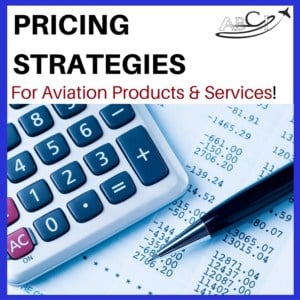 Paula Williams: Okay, cool, so download our pricing tip sheet, it is still available at ABCI1.com/Pricing. It’s Alpha, Bravo, Charlie, India ABCI1.com/Pricing, and that talks about pricing your product in a premium way so that you can advertise to a very specific list to meet their needs very specifically.
Paula Williams: Okay, cool, so download our pricing tip sheet, it is still available at ABCI1.com/Pricing. It’s Alpha, Bravo, Charlie, India ABCI1.com/Pricing, and that talks about pricing your product in a premium way so that you can advertise to a very specific list to meet their needs very specifically.
Okay, and you may also want to see to learn more about pricing strategies- episode 19. To learn more about qualifying prospects, episode 17, and to learn more about pricing strategy for qualifying prospects, which is putting those two things together. That is the last episode we did episode 43.
So there’s some more resources for you if you would like to learn more, so go sell more stuff.
John Williams: Yep, Zig Ziglar said America needs the business.
Paula Williams: Absolutely. Subscribe to our podcast on iTunes, Stitcher, and Google Play and, please do leave us a rating.
John Williams: See you next time.



